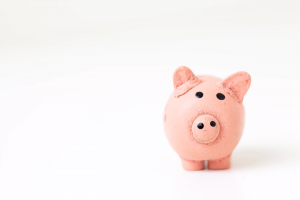
Earlier this month, we discussed emergency funds and went over 7 reasons why you should have one. We stressed the importance of only using an emergency fund for a real emergency—perhaps a medical expense, a home or car repair, or suddenly finding yourself unemployed (with more reasons listed in the post). As the term “emergency fund” is fairly self-explanatory, we covered what it is in its simplest form—basically is a stash of money that you set aside in case of emergency. As an emergency fund can take a few different forms, in this post we’ll delve further into the what by covering some options as to how and where to set one up.
How to set up an emergency fund
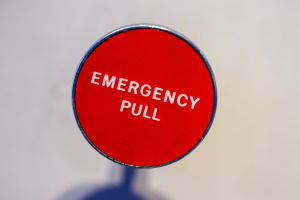
As with anything, there’s no one correct way to go about setting up an emergency fund—there are many variables, as each person’s situation is different. No two people have the exact same income, monthly expenses, or job volatility and nor do they have the same ideas as to what amount would make them feel secure. That said, we can offer some advice that should suffice as guidance for most people to take and run with.
Decide how much money you should save

This question is probably the first thought for many when looking into setting up an emergency fund. Most people will tell you to save enough to cover your living expenses from anywhere from three to six months (some say a full year). Typically, this is an average amount of time it may take for someone to find a new job if they’re laid off. The exact timeframe is relative, however, and you ultimately should really think about how much you would need to save to feel secure in the face of an emergency. It’s ok to start small, as anything is better than nothing—you can put away a little now, and build upon it over time.
Figure out and calculate your expenses
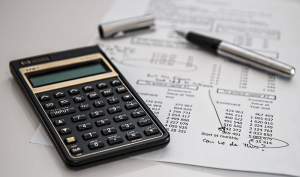
Once you’ve decided on how many months of expenses you want to cover, you need to calculate those expenses to arrive at an actual figure. Start by making a list of all of your monthly expenses, from rent and bills to groceries and transportation. Don’t forget to include debt repayments, if you have them, as the whole point of an emergency fund is to avoid going down that slippery slope. In this case, it’s better to overestimate than underestimate miscellaneous expenses (a little extra cushion is never a bad thing). Once you’ve calculated all of your expenses, you can multiply that figure by the number of months decided upon to reach the amount you’ll want to set aside in your emergency fund.
Figure out how much you can afford to save
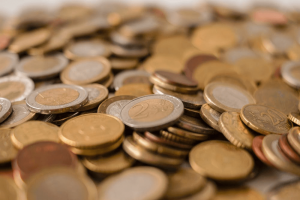
As you’re calculating your expenses, you can start do determine how much you can afford to save. Don’t be deterred if it’s not a lot—it takes most people a good amount of time to establish a full fund. Even an extra €20 per month is a start—the key is to just start with something.
As you’re looking over your expenses, you can try to get a grasp on some of your discretionary (i.e. non-essential) expenses and find a way to make some cuts. Start cooking at home more than going out, skip a hair appointment or two, make your own coffee versus going to expensive shops—find little (or big) ways to be able to contribute more to your emergency fund over time. You don’t need to go bare bones—see what you can do without while still living comfortably.
Set up automatic deposits
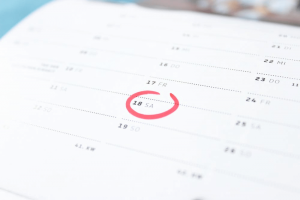
This is key when you’re trying to save. You can still manually contribute extra cash to your emergency fund (the more, the merrier), but having an automatic deposit of a baseline sum makes it very easy. It also holds you accountable to stick to it—it’s along the lines of the “pay yourself first” principle. If you don’t have recurring contributions set up, it’s all too easy to skip a payment or designate the allotted funds to something else you may think you need. If you have recurring deposits set up, you’re forced to budget around it and consider it a regular expense alongside your bills and other must-pay expenses. You can always assess and adjust your contributions after a few months.
Where to set up an emergency fund
So now you know how to get started, but the question remains as to where to set up your emergency fund. There are various options, but the best option is something low-risk and where you can access it without restrictions. That said, there are two important things to keep in mind when you’re deciding on where to set up your emergency fund.
Set it up somewhere accessible
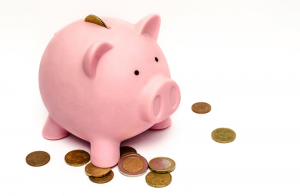
As emergencies generally hit without fair warning, it’s crucial that you have quick and easy access to your fund. You don’t want your fund to be somewhere with difficult and slow liquidation, as the whole point is to be able to access your money when an emergency unexpectedly strikes.
Set it up someplace completely separate from your regular bank account

As we have stressed previously, emergency funds should only be used for emergencies. To avoid the temptation of dipping into your account for less-than-dire situations, set your emergency fund up somewhere separate from your primary bank. You may think of just opening another account within your primary bank, but it’s too easy these days to transfer money between accounts. A separate location will ensure that your money is there when you need it and will help you to not categorize it as just another bank account you can access quick cash.
With that in mind, you now need to get into some feasible options. Savings accounts, money market accounts, and short-term certificates of deposit are all accessible options, whilst still earning you some interest. Online banks definitely are a great option if you want to steer clear of your brick and mortar primary bank. Do your homework regarding the different yields and options, while also picking a friendly user interface that you’re comfortable navigating.
For that matter, any online option will generally offer higher yields than brick and mortar banks, as they don’t have to contend with large overhead costs as the price of doing business. There are an increasing number of fintech companies available for savers and investors; companies looking to fill multiple gaps where big banks just don’t cut it. It’s a truth held self-evident that you should err on the side of caution with the management of your emergency fund, but you also need to consider inflation—if your money is just sitting stagnant, it can lose a good chunk of its buying power. This means that—as inflation percentages typically are higher than standard bank account interest rates—the price of things you purchase is increasing at a quicker rate than your money is growing. Even if you don’t want your emergency fund to be near anything that may pose a risk, you should consider figuring out how to make your money work for you once you’ve established your fund. Fintech companies have given us so many more options, many that are simple, accessible, and fall on a spectrum from low to high risk (and lower to higher yield).
It’s important to remember that financial options and tips are never one size fits all—every person and situation is unique. Even if you feel your finances fall short or are in too much of disarray to even consider saving or starting a separate fund, remember that even the smallest amount can make a difference. A couple hundred can get you out of a bind, and starting small is still starting—starting is the key.